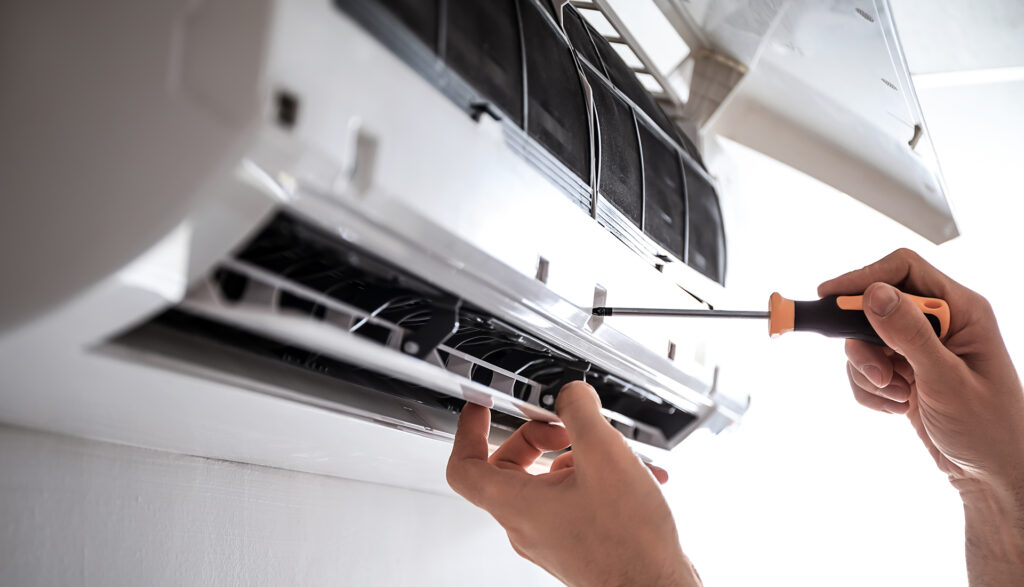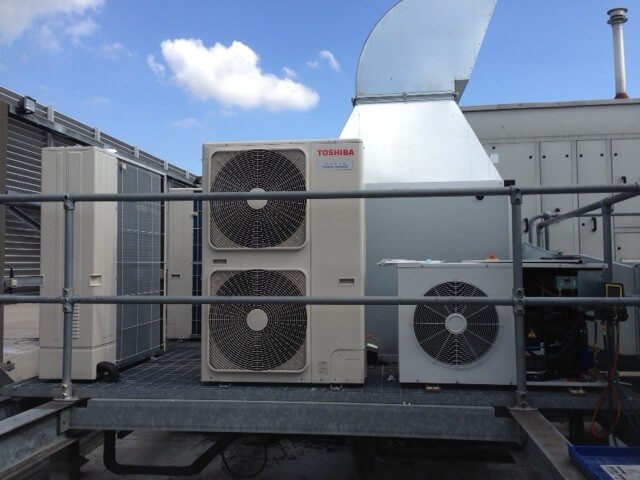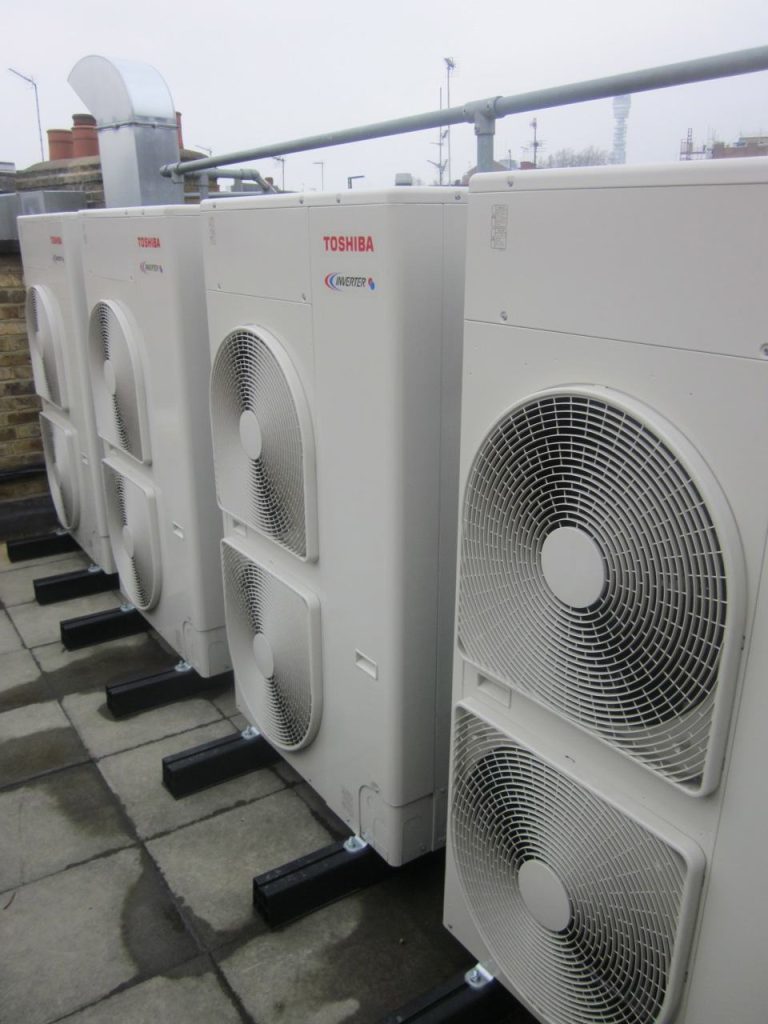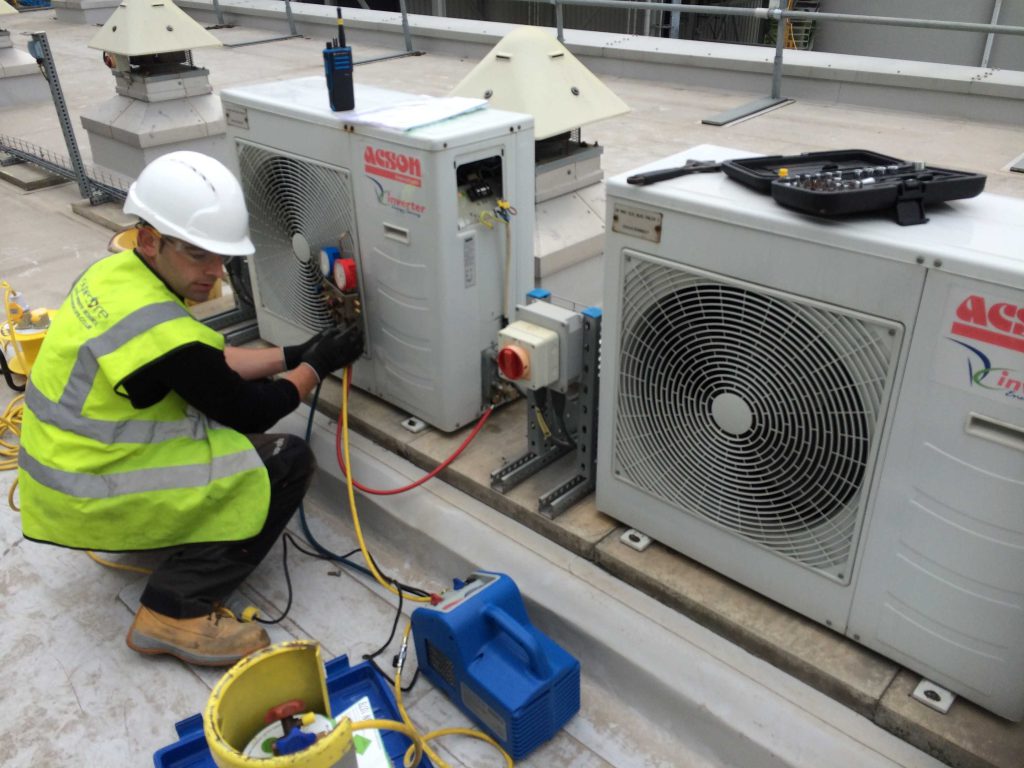HVAC Plays An Important Role In A Healthy Building

Estimated reading time 12 minutes
In a previous article we wrote about how good ventilation is one of the ways that have now been shown to be vitally important (alongside other measures) in making sure that indoor spaces remove air that contains virus particles to prevent the spread of coronavirus. In this article we look at how HVAC plays a vital role in maintaining a healthy building.
This is backed up by government advice which states “Letting fresh air into indoor spaces can help remove air that contains virus particles and prevent the spread of coronavirus (COVID-19).”
Further evidence from by the World Health Organization (WHO), Centers for Disease Control and Prevention in the US and the Chartered Institution of Building Services Engineers (CIBSE) also acknowledge Covid-19 airborne transmission and advocate that indoor spaces should be ventilated as much as possible “whilst minimising occupant discomfort due to draughts and lower indoor temperatures.”
Clearly in today’s current pandemic circumstances where Covid-19 is a risk, which should provide reason enough to ensure your building is well ventilated, it’s apparent that good HVAC in buildings is imperative as it provides a variety of other benefits over and above a way to combat Covid-19. Given that most of us spend at least half of our waking hours at our workplaces it’s easy to understand why the quality of air in the buildings we work in can affect comfort levels, health and productivity. Any measures that can be taken to protect the quality of the air we breathe, such as good ventilation, should be taken seriously.
This article will look at how an HVAC plays an important role in a healthy building.
The Negatives Of Poor HVAC
In order to understand the benefits of good HVAC it’s important to understand the negatives that can result when a building has poor HVAC. These are:
- low air quality can have a negative impact on a building’s occupants
- poor temperature control
- poor humidity control.
According to the government’s “Postnote” on UK Indoor Air Quality indoor air pollution is a mixture of pollutants generated inside a building from building materials, furniture and furnishings, the use of paints, varnishes, cleaning products, air fresheners, etc., and pollutants generated outside a building (by industrial processes, traffic emissions, etc.) that migrate indoors through windows or other means of ventilation and natural radon gas that enters buildings from the ground.
They go onto list various pollutants and their effects on health e.g.
- particulate matter (PM) which can lead to reduced lung function and increased risk of heart and respiratory disease
- allergens, moulds and dust which can cause a worsening of symptoms of asthma, wheezing and in severe cases hospitalisation
- volatile organic compounds (VOCs) and ozone cleaning products in paints and printers which can lead to respiratory tract irritation and asthma
- bacteria and viruses including Legionella pneumophila and the cold and Covid-19 virus
- radon (a gas produced by the radioactive decay of uranium which is present in soils and rocks in small quantities) which can cause lung cancer.
Interestingly many of the symptoms and illnesses above have also been associated with Sick Building Syndrome (SBS) where occupants of a building experience a range of different and unexplained symptoms which are related to the time spent within the building, most typically an office building. Common symptoms include breathing difficulties, tightness in the chest, cardiac arrhythmias, throat irritation, eye irritation, dry cough, runny nose, sneezing, itchy skin, dizziness, fever and chills, headaches, trouble concentrating, nausea, irritability and fatigue, problems with concentration and memory. Symptoms very often abate once the person has left the building.
The Benefits Of Heating, Ventilation and Air Conditioning
An HVAC system provides a number of business benefits over and above improving indoor air quality by removing air pollutants. Some of these many benefits include:
Improved temperature control (and productivity)
A heating, ventilation and air conditioning system enables you to take control of the temperature within your building irrespective of whether the outside temperature is hot or cold. It also allows you to set a comfortable temperature for the building occupants which in turn can have an impact on productivity.
The Trade Union Congress (TUC) published a paper on Heat – The case for a maximum temperature at work which states “It’s usually accepted that people work best at a temperature between 16°C and 24°C.
When the workplace gets too hot it is more than just an issue about comfort. If the temperature goes too high then it can become a health and safety issue. If people get too hot, they risk dizziness, fainting, or even heat cramps. In very hot conditions the body’s blood temperature rises. If the blood temperature rises above 39 °C, there is a risk of heat stroke or collapse. Delirium or confusion can occur above 41°C. Blood temperatures at this level can prove fatal and even if a worker does recover, they may suffer irreparable organ damage.
However even at lower temperatures heat leads to a loss of concentration and increased tiredness, which means that workers are more likely to put themselves or others at risk.”
Worldwide research shows that temperature plays a major role in just how productive we are:
The Facilities Management Journal (FMJ) carried out a survey which found that nearly one third of workers lose productivity due to unsuitable office temperatures. The survey reported that 29% of office workers are unable to work efficiently, on average between 10 – 30 minutes a day due to uncomfortable office temperatures. 6% said they lose more than 30 minutes a day of productive working time due to office temperatures not being conducive to working conditions. The results of the survey show that the wrong office temperature could be costing UK businesses as much as 2% of office hours which equates to approximately £13 billion annually (assuming an average wage of £26,500; 29.84m UK employees and a 228 day working year).
YouGov reported that the average British worker’s ideal office temperature is 21°C but at 28°C it becomes too hot to work efficiently.
In a further study on the “Effect of Temperature on Task Performance in Office Environment”the Lawrence Berkeley National Laboratory found that performance increases with temperature up to 21-22°C, and decreases with temperature above 23-24°C. The highest productivity is at temperature of around 22°C. For example, at the temperature of 30°C the performance is only 91.1% of the maximum i.e. the reduction in performance is 8.9%
Further research undertaken by Cornell University showed the optimal temperature for office productivity is 25°C (77°F). Alan Hedge, professor of design and environmental analysis and director of Cornell’s Human Factors and Ergonomics Laboratory explained “At 77 degrees Fahrenheit, the workers were keyboarding 100 percent of the time with a 10 percent error rate, but at 68 degrees, their keying rate went down to 54 percent of the time with a 25 percent error rate. Temperature is certainly a key variable that can impact performance. We expected that when you cool people down, they work harder and better… We found the exact opposite. When it was cool to colder in the office, people did less work and made more mistakes.”
Temperature can also play a role in hiring and retaining employees. If you’re interviewing in a hot or humid environment or expect employees to work in hot or humid or cold conditions you may find it hard to attract or retain the right staff.
Improved humidity control
Humidity is a measurement of the amount of water vapour in the air. The higher the amount of water vapour in the air the higher the humidity. When there’s high humidity we can end up feeling hotter. This happens because our bodies normal way of cooling down is impeded.
In normal conditions our body produces sweat. This sweat evaporates to release body heat. When the surrounding air contains high amounts of water vapour it’s harder for sweat to evaporate as the air already has a high moisture content and can’t absorb any more water. As a consequence our body is unable to release the heat and we become hotter, skin becomes clammy and damp and we become more and more uncomfortable.
High and low humidity can also have health implications including over-heating, respiratory infections and allergic reactions. This can be explained when you look at the consequences humidity can have on a building.
Humidity can affect the actual structure of a building. Humidity can result in condensation which can ultimately cause damage to the fabric of a building. In fact moisture is the most common cause for building deterioration. If left unchecked, this can ultimately lead to major problems, which reduce the lifetime of a building and the furniture and equipment within it.
The same condensation you see on the windows is also likely to be inside the building walls too. In high humidity levels building materials can swell and shrink as they take on and lose water content. The effects of changing moisture content can lead to shrinking in joists, stud walls and wood panelling and in some cases can cause plaster to crack.
The increase in condensation can also lead to the growth of mould (also known as mildew). Mould is a natural fungal growth which breaks down dead organic matter, playing a vital role in nature. However it isn’t something you want to find or encourage to grow in your building. Mould reproduces through spores. These spores are small enough that they are invisible to the naked eye and can float round in the air and attach themselves or spread to other surfaces. Given the right conditions spores can form new mould colonies. Once in the air mould spores can cause a variety of symptoms including eye irritation, nasal issues, itchiness and respiratory problems.
Improving cognitive function
A landmark report “Associations of Cognitive Function Scores with Carbon Dioxide, Ventilation, and Volatile Organic Compound Exposures in Office Workers: A Controlled Exposure Study of Green and Conventional Office Environments” published in 2015 by Harvard's School of Public Health's Center for Health and the Global Environment in conjunction with SUNY Update Medical University and Syracuse University found that indoor air quality has an impact on building occupants' cognitive functioning.
24 participants spent 6 days from 0900–1700 hours in an environmentally controlled office space. On different days, they were exposed to high concentrations of volatile organic compounds (VOCs), representative of conventional levels and low concentrations of VOCs (green) based on those found in office buildings in the US. Additional conditions were also applied which simulated a Green building with a high outdoor air ventilation rate (green+) and artificially elevated CO2 levels independent of ventilation.
They found that “on average, cognitive scores were 61% higher on the green building day and 101% higher on the two green+ building days than on the conventional building day (p < 0.0001). VOCs and CO2 were independently associated with cognitive scores.”
In another paper “Indoor Air Quality and Cognitive Performance” they studied the causal impact of indoor air quality on the cognitive performance of individuals using data from official chess tournaments and found an increase in the indoor concentration of fine particulate matter (PM2.5) by 10 μg/m3 increased a player's probability of making an erroneous move by 26.3%.
Reducing time off
We know that poor ventilation and air quality, high or low temperatures and humidity can cause ill health. From simple allergies including a runny nose, cough or streaming eyes to heart and respiratory disease, sick days can be attributed to work environments where air pollution is high and where temperature and humidity are not controlled.
Research has shown that:
- “good physical conditions” can improve absenteeism (in schools) [this equally applies to workplaces].
- poor indoor air quality may impact productivity and increase absenteeism
- if you improve the air quality at work, you improve productivity [and reduce absenteeism]
Good indoor air quality and controlled temperature and humidity supports better health, which in turn means staff are less likely to be absent due to illness. Clearly reducing staff time sick leave will result in higher productivity and ROI.
Happier customers
Many of the research and studies above address the air quality and temperature in office buildings however it equally applies to all workplaces and circumstances. No one wants to visit an establishment when the temperature is too cold or hot. If a building is uncomfortable to be in you are less likely to want to spend time there and it may impact any future decisions on whether to return at a later date.
Today’s customers expect HVAC in buildings to be the norm enabling them to work, dine, shop and exercise in comfort.
Easier to rent
If your building is air conditioned, temperature and humidity controlled it is also more likely to be a healthy building and you are far more likely to find it easier to rent. When it comes to a choice between a well-ventilated, comfortable space vs. a hot, humid or cold place renters are more likely to choose the first option.
HVAC Experts
Synecore are experts in heating, ventilation and air conditioning systems and can advise you on the best solution for your business premises. Synecore operate throughout Kent, London and the UK, providing commercial and industrial clients with the very best in HVAC systems and maintenance.
If you’re looking to install a new HVAC system, replace an old system or setup a maintenance contract for your existing HVAC contact our team or call us on 01795 509 509. We’ll talk you through your options and provide you with expert advice.



